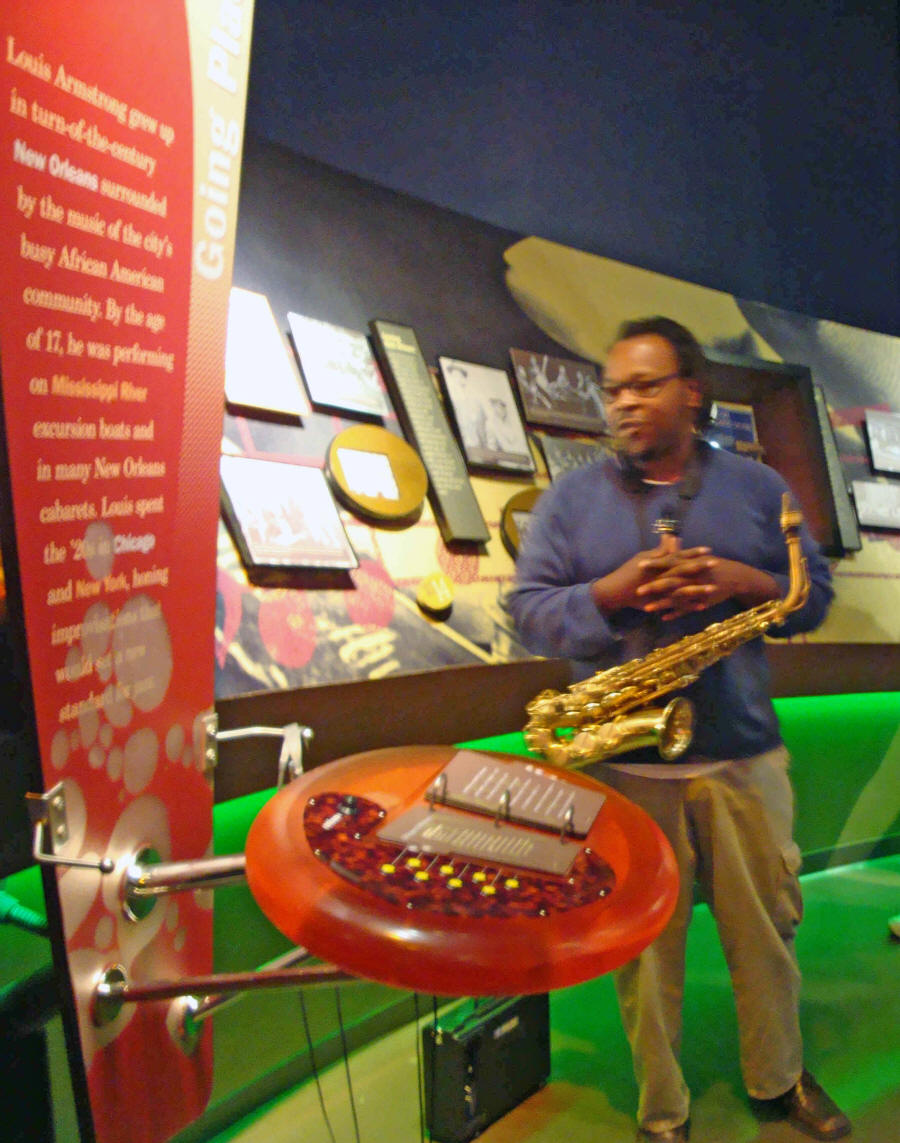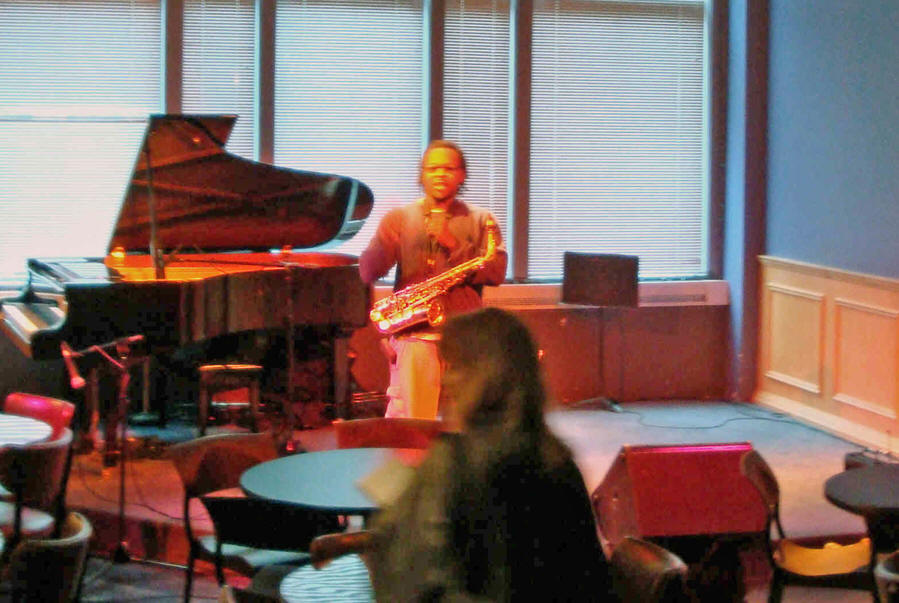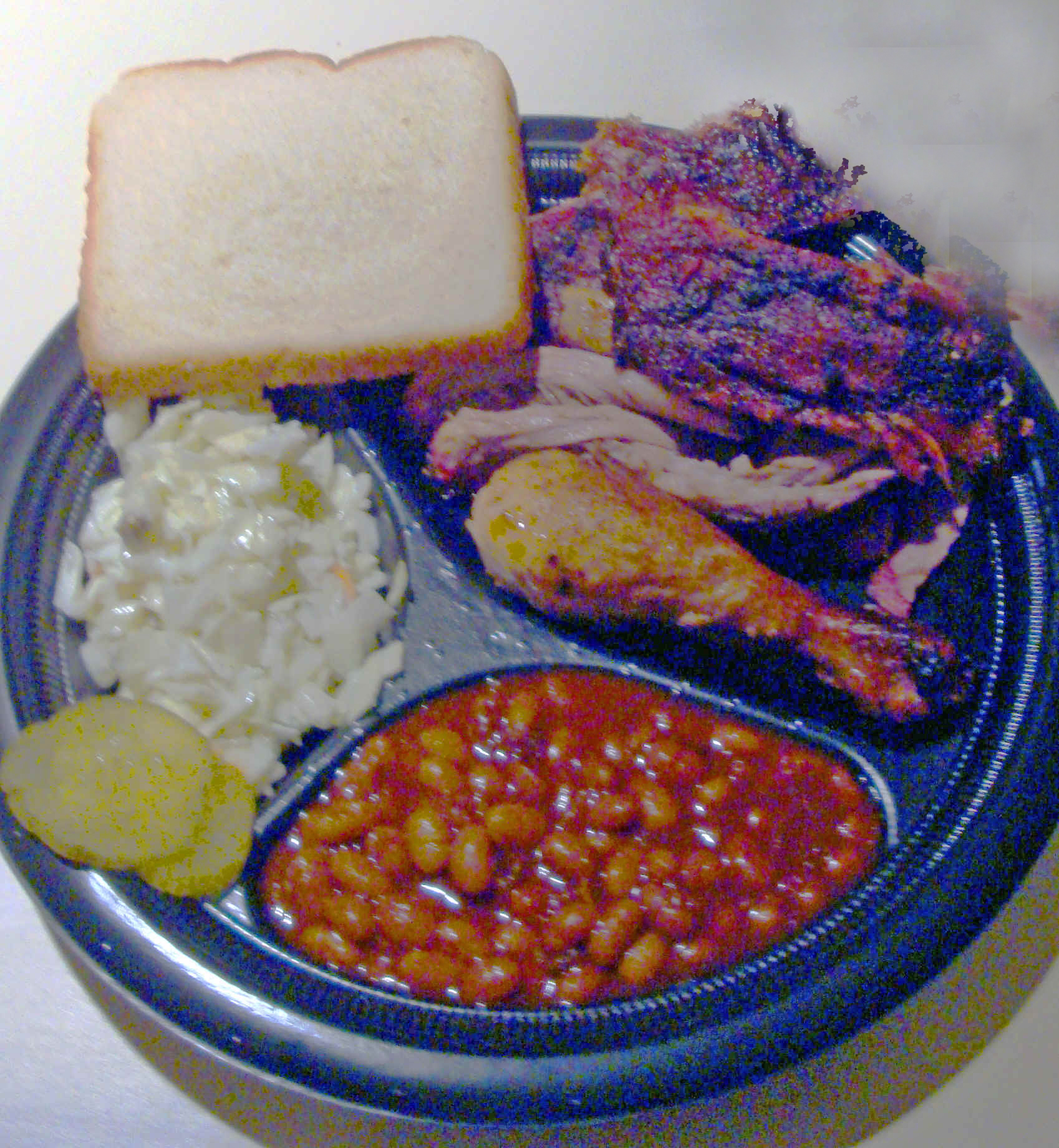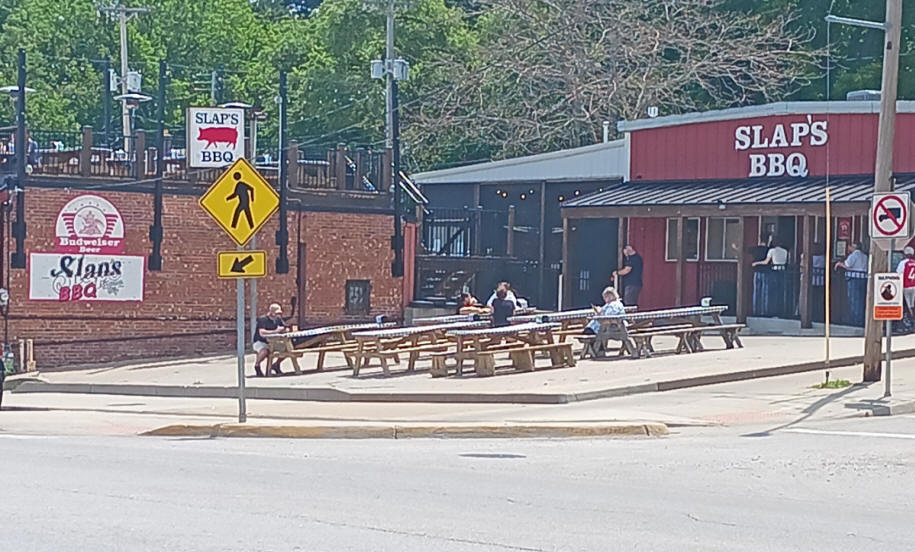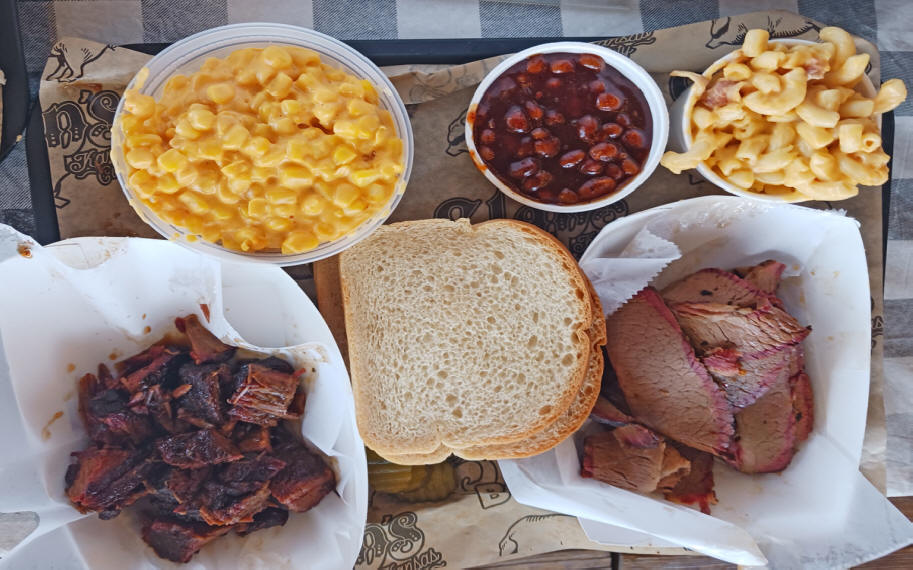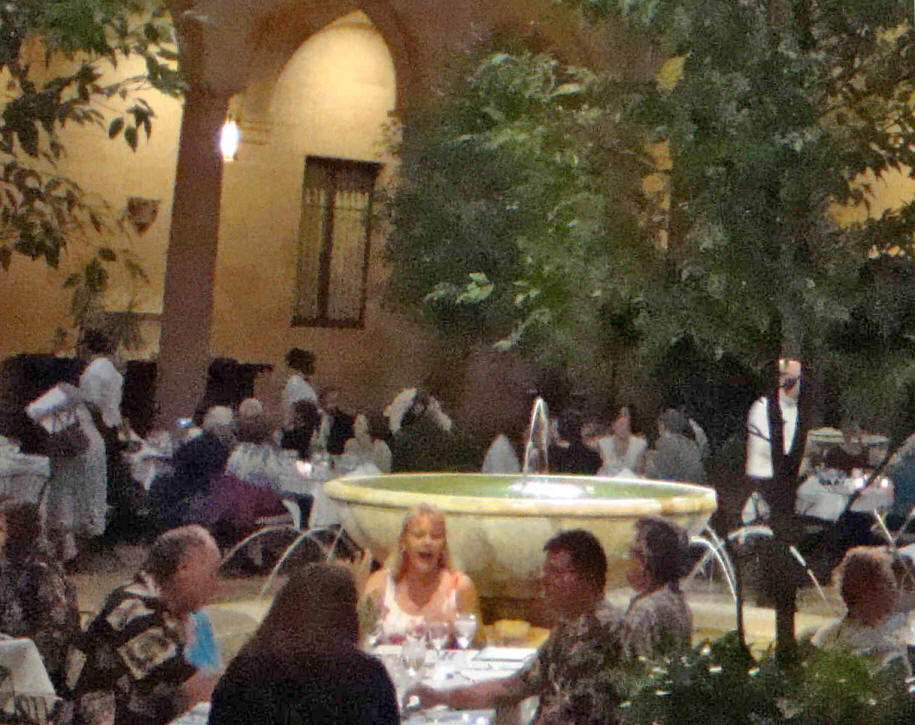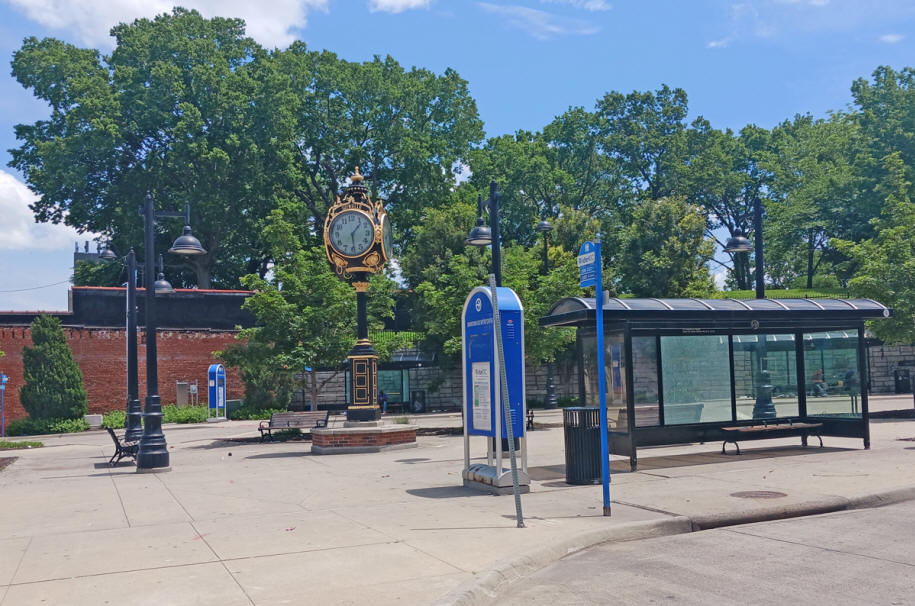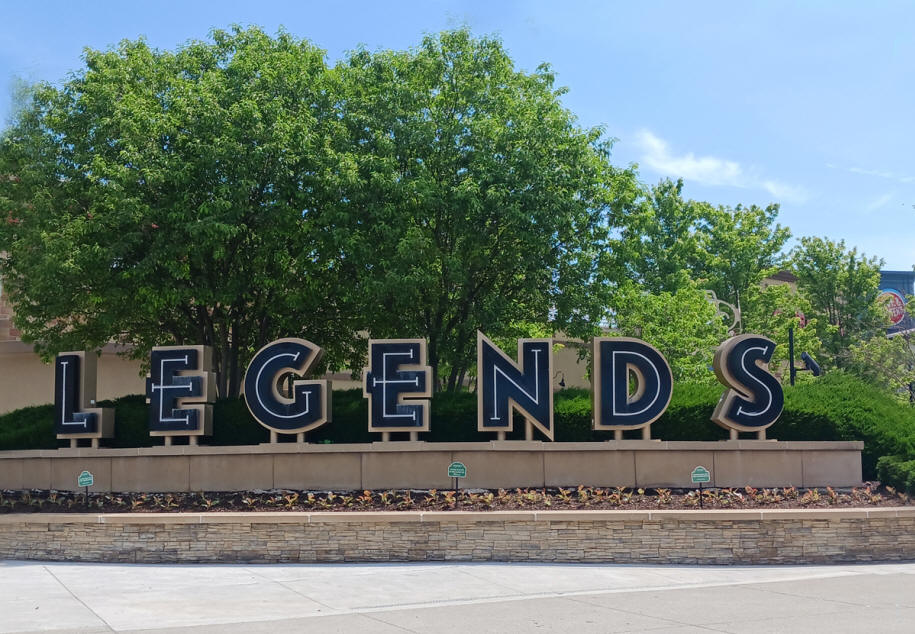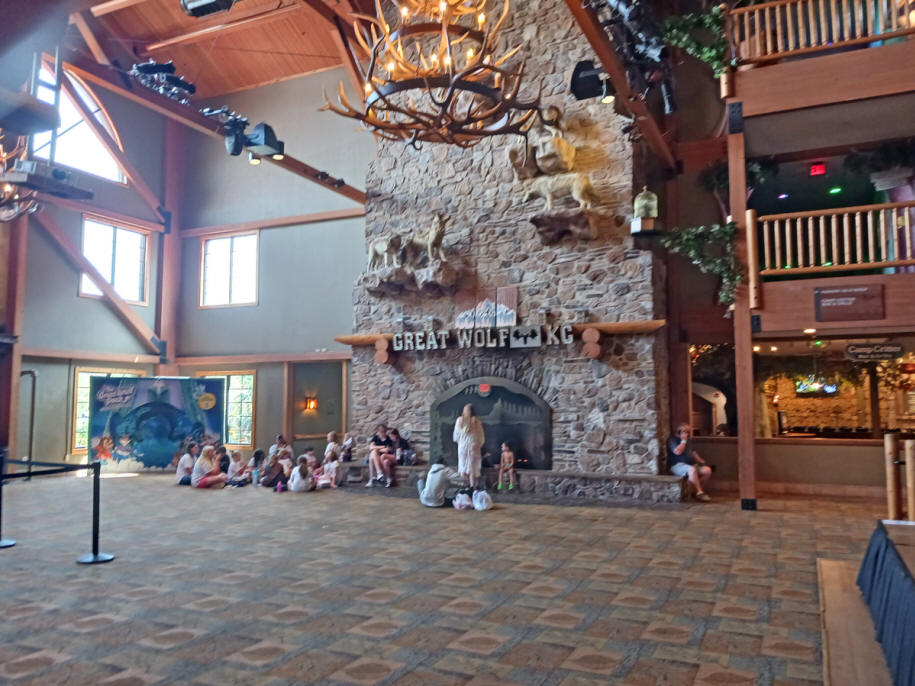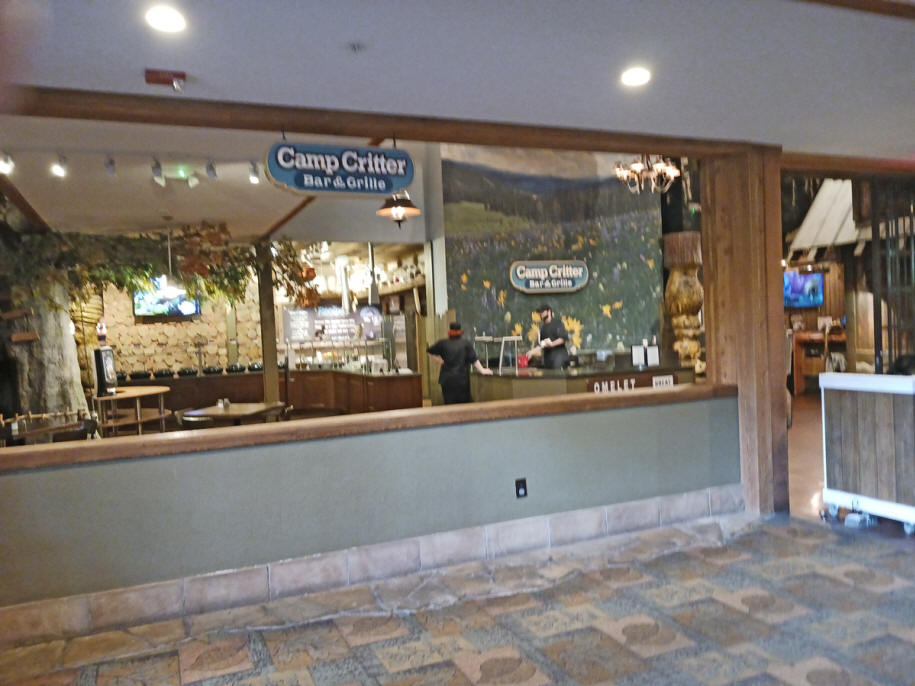
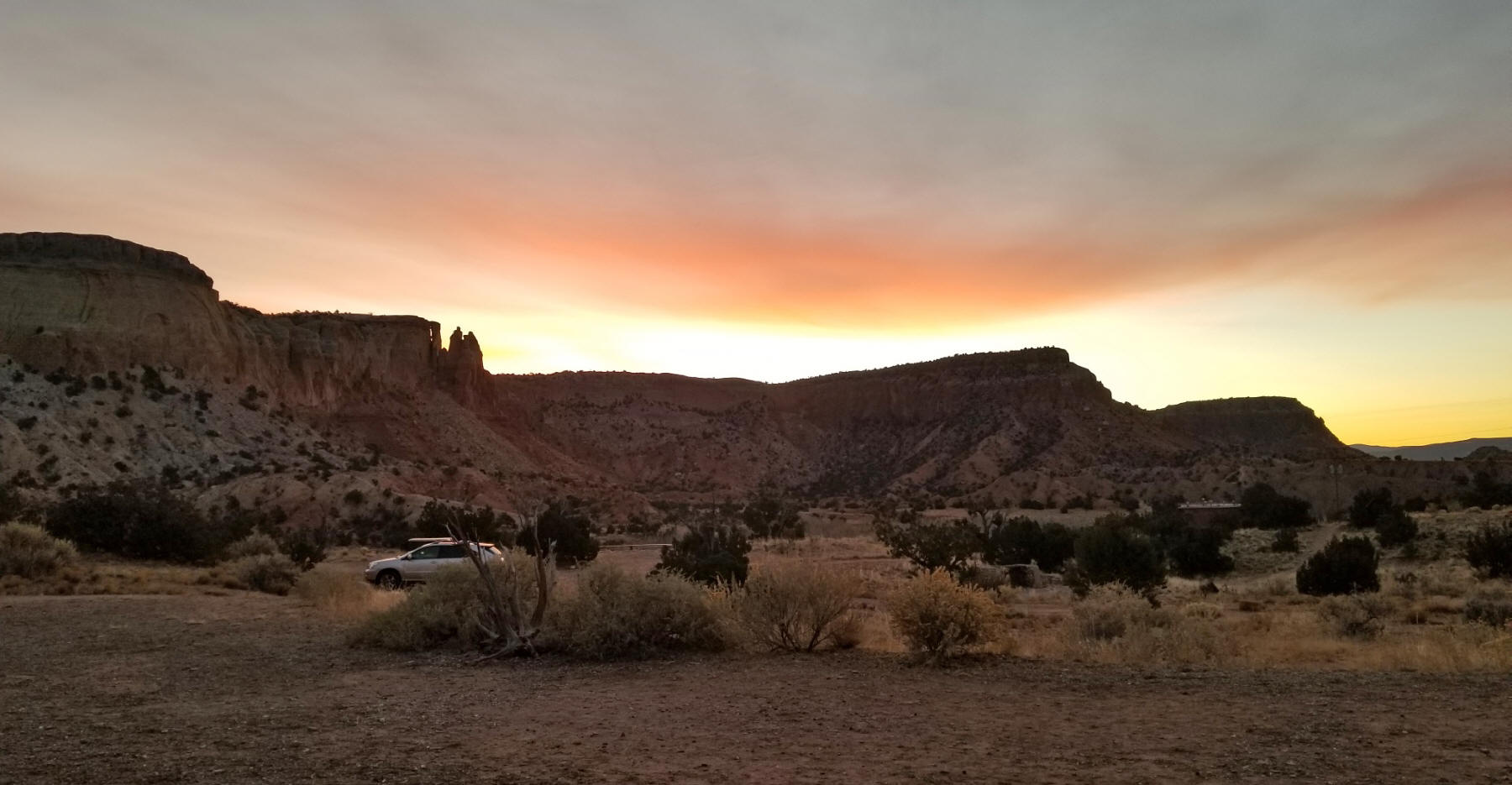
A trip to the American Jazz Museum in the Historic 18th and Vine Jazz District convinced me that was so. The reason for this lies in prohibition and its sometimes strange effects. In the early 1900s jazz began to take on a life form of its own. By the time prohibition arrived .in 1920, New Orleans was already rocking to the jazz beat of greats like Louis Armstrong, King Oliver, Kid Ory and Jelly Roll Morton. As everyone knows, jazz and booze just naturally go together. When prohibition shut the spigot on America's alcohol habit elsewhere, Kansas City was under the control of Tom Pendergast's Democratic political machine. Pendergast refused to allow the liquor supply to dry up in "his" city. He also was the owner of a concrete plant so many WPA type projects were flourishing in Kansas city also. There depression did not grip the residents as it did elsewhere. Musicians traveling anywhere found Kansas /city a convenient hub as well since it was so centrally located in the county. The city was wide open. The sounds of jazz poured into the streets 24 hours a day. Between 12th and 18th streets, there were 50 live music clubs. Edward Morrow refereed to Kansas City in his Omaha World Herald column, "If you want to see some sin, forget about Paris and go to Kansas City. With the possible exception of such renowned centers as Singapore and Port Said. Kansas City probably has the greatest sin industry in the world."
I was fortunate enough to have Dennis Winslett, the Jazz Museum education specialist, explain the museum and its purpose to me. He started off with the four "tribute areas" to the all time greats of jazz: Louis Armstrong, Charlie Parker, Duke Ellington and Ella Fitzgerald. Louis Armstrong was the most familiar to me as he was a New Orleans native who spent much of his life in the Crescent City. He achieved the greatest measure of fame a African American musician of his generation ever knew. He scored the first jazz number one hit with "All of Me" in first jazz hit in March 1933 and was the oldest recording artist to have a number one hit: "Hello Dolly" in May 1964 when he was 63. Charlie (Yard Bird) Parker was born in Kansas City. He is credited with starting the "Bebop" movement. He introduced a lot of improvisations to jazz which influenced many of the jazz greats who followed him Although addicted to heroin, Parker still produced many great records. His addiction often caused him to be very short of money and found him pawning his sax. As a result much of his music was played on a cheap plastic instrument, now on display that the museum. He left Kansas City, and his first and only legal wife, in 1942 to seek his fortune in New York. When he died due of pneumonia, caused in part by his alcohol and narcotic habits, a corner said that the body was that of a 60 year old instead of Parker's actual 34 years. His common-law-wife at the time of his death, Chan Parker, said that he did not ever want to return to Kansas City but his first wife, whom he had never legally divorced, had her way and the body was returned and buried in Lincoln Cemetery just outside Kansas City limits perhaps he got his wish technically. Duke Ellington was another jazz great that played in Kansas City on November 2, 1936. He appeared at Paseo Hall in Kansas City before more than 2,000 music lovers who were crammed into every available inch of space. "Every man prays in his own language." Duke Ellington said and surely his music is a prayer that lives on long after its composer is gone. He is well remembered at the Jazz Museum. Ella Fitzgerald is another old favorite. As the woman, her star shines brightly at the museum. She once said "It isn't where you came from, its where you're going that counts." In her own case that was so very true. she grew up a poor girl in Yonkers, New York. After her mothers death, she got into some trouble and ended up in a reform school. Conditions were so bad there she ran away and at 15, found herself alone and penniless in the middle of the great depression. Somehow she struggled along until in 1934 her name was pulled in a weekly drawing at the Apollo Theater for the opportunity to compete in Amateur Night. The Apollo had a rough and rowdy crowd who never hesitated to boo a performer off the stage if they didn't like the act. Ella went to the theater that night planning to dance but when the act before her was a great dancing team of sisters, she changed her mind at the last minute. The audience was already becoming restless while she contemplated what to do. then she asked the band to play Hoagie Carmchael's Judy, one of her mother's old favorites. The audience was captured and demanded an encore. Her career was launched. By 21 she was the leader of her own band. From then on it was musical history. Known as the "First Lady of Song," Fitzgerald is considered one of the most influential jazz vocalists of the 20th century. In her lifetime, she won 13 Grammy awards and sold over 40 million albums. She was awarded the National Medal of the Arts and a Kennedy Center Honors award.
All four musicians have had United States postage stamps issued in their honor. Of course, the museum has much more, starting with a great film about the history of jazz. Another unique part of the museum is the Blue Room, a real legacy for the 30s and 40s when jazz was king in KC. By day, an exhibit in the museum by night a performing club. The nine small glass enclosed tables on the floor level are display cases containing musical treasures from Kansas City's musical heyday I returned that Thursday night to hear Bob Bowman and Bowdog play. It felt like I was transported to the thirties. It has earned recognition from many sources and has been named three times by DownBeat Magazine as one of the Top 100 jazz clubs in the world – Kansas City's only club to earn that honor. Arthur Bryant's
Kansas City may be best known for its barbecue. I enjoyed a sampling of that tasty stuff at Arthur Bryant's, known as "The King of Ribs." There are over 90 barbecue restaurants in Kansas city, more than any other city in the country but Author Bryant's has been named "best restaurant in the world" by New Yorker Playboy columnist Calvin Trillin and just as highly praised in other magazines like Forbes, Bon Appetit, Better Homes and Gardens, People, Gourmet and others. The restaurant had humble beginnings and the main restaurant still looks like just a poor inner city place but oh the taste of that food! It all began in 1908 when Henry Perry opened the first barbecue joint in Kansas City in an old trolley barn at 19th & Highland. Charlie Bryant was one of his first cooks, Charley learned his skills from the master and when Perry died, he bought the now thriving business and brought in his younger brother Arthur to help. When Charlie died in 1946, Arthur moved the business to its present location at 18th and Brooklyn. Arthur tinkered with the sauce until he achieved finger licking perfection, a sauce both hot and sweet and thick enough to stay on the meat. He has served rich and poor alike. Two presidents have eaten at his restaurant, Harry Truman and Jimmy Carter both have enjoyed the food. Some of the other famous patrons are Steven Spielberg, Michael Landon, Robert Redford, Jack Nicholson, Wilt Chamberlain, Bryant Gumbel, Tom Watson, George Brett and many more. the restaurant's front room side wall attests to the many famous patrons who have eaten there. Although Arthur passed away in 1982, the tradition lives on. There are now several branches and their catering is famous. I enjoyed a very stuffed plate.
Slap's BBQ
This visit I tried a new bbq restaurant, Slap's BBQ. The name is a play on "Squeal Like a Pig." It began when brothers Mike and Joe Pearce successfully competed as pitmasters in the Squeal Like a Pig BBQ competition in 2013. The following year they opened Slap's and it has become so successful Arthur Bryant's had better watch their title. They keep up with trends like Burnt Ends which have become very popular. They are tasty tidbits previously thrown away. Another of their innovations is the side dish of Cheesy Corn. I loved it. It's a Korean-American dish that came about after the Korean War when American soldiers passed out rations of canned corn and slabs of cheese along with other items.
Plate at Slap's with brisket, burnt ends, sides of baked beans, mac and cheese, and cheese corn Slap's BBQ stands out as one of the rare
city restaurants actively participating in the KCBS circuit
each season, averaging 25-35 contests. Joe Pearce came close to achieving the ultimate barbecue greatness in the Kansas City Barbeque Society's Team of the Year points competition. Pearce finished in second place after competing in 27 contests over 21 weeks, against over 2,800 pitmasters worldwide. His team earned the title of Reserve Grand Champion. Only a two-point margin determined the champion. FountainsThe third item that distinguishes Kansas City is its fountains. They claim more fountains than any other city except Rome. I didn't get to visit all of them but saw enough to know that not only is there quantity but quality is present also. Kansas City is graced with over 200 fountains. The "Fountain Movement" began in the 189s with the "City Beautiful" movement. The city's oldest fountain was built in 1899 by George Kessleri at 15th and The Paseo. That original fountain was destroyed in 1941 but the same year, he designed another fountain that still exist and is the oldest in the city. It is the Women's Leadership Fountain. 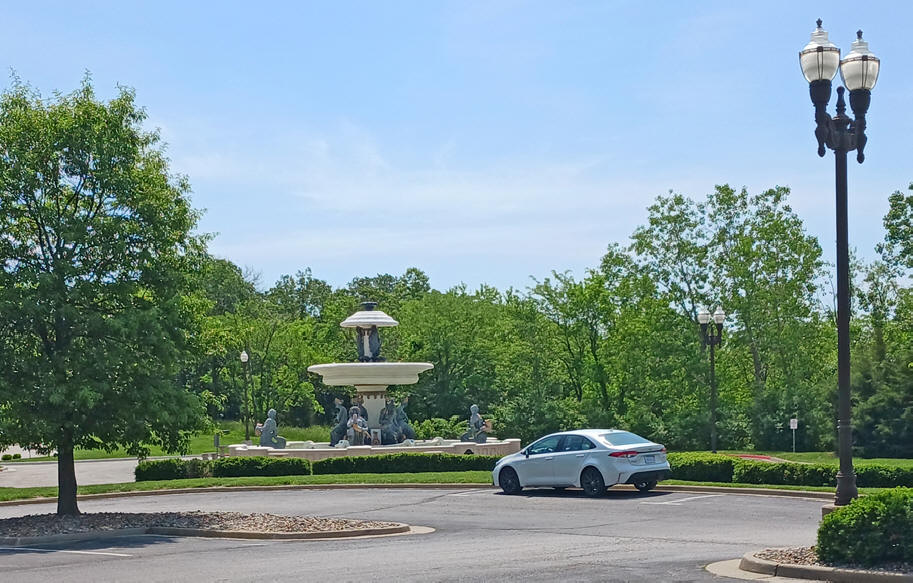 One of
Kansas City's many fountains. Unfortunately it was turned off
when I was there. One of
Kansas City's many fountains. Unfortunately it was turned off
when I was there.
Early fountains served multiple purpose. they were beautiful but they were also useful. For example, The Humane Society of Kansas City built many of the early fountains over naturally occurring springs to provide water for people, horses and dogs. In one fountain, A lions head formed a spigot that spurted clean water for humans, it fell into a trough the right height for horses and then trickled into lower bowls for dogs and cats. The Cat Fountain in Country Club Plaza is reminiscent of that fountain. Today, any new corporation that builds in Kansas city is expected to include a fountain in its decorating. Kansas City's eight city block revitalization of its downtown called the Power and Light district has a $1 million fountain. In fact, almost anywhere you look you will found a fountain. Crown Plaza has one that welcomes kids of all ages to frolic amid its jets. Hallmark which has called Kansas City home for over a century, has a long reflecting pool that drops in mini waterfalls over six times along the length of the fountain and culminates in a pebble bottomed pool that simulates a riverbed.
The Nelson-Atkins Museum of Art rivals the best art museums to be found anywhere. It has a reflection pool that reflects the newest addition to the museum, Bloch Building. Its Sculpture Park is just outside amidst the lush grass. The Shuttlecock sculptures which are world famous are the scene of free movies at night, The museum is very open and has many entrances where a patron with a tired child might enjoy the interior art and then take the child outside to the courtyard and return easily through one of the numerous doors. Not all of the fountains are outdoors. The Nelson-Atkins boast one of the oldest fountains in what has been called "the prettiest museum cafe in the Midwest" by Travel Holiday magazine, Rozzelle Court Restaurant. The restaurant is designed to replicate an open-air Italian courtyard. Normally it serves buffet-style meals with gourmet main dishes, salads, soups, breads and desserts. Some Fridays there is live jazz music. The centerpiece of the courtyard restaurant is the Rozzelle Court Fountain. This fountain dates to around 200 A.D. It was used in a Roman bath however not as a fountain. The shallow marble bowl was used to hold scented oils that patrons of the bath would anoint themselves with. Clocks
Before the coming of the computer age and cell phones, outdoor
clocks were common. Kansas City honors that tradition with
numerous public clocks. Kansas City’s Union Station, which
opened in 1914, boasts one of the most famous. The a large
dual-sided, 1,000-pound clock in the station’s Grand Hall, is
known as the “Big Ben of the Plains.” One of Kansas City’s most iconic clocks
and official historic landmark is known as The Winkler Clock.
It was originally installed in 1915 in front of Winkler’s
Jewelry, to make potential customers aware of their clock and
watch repair business. The clock is a rare Seth Thomas Clock
Company product. There are only about 20 of this particular
style clock. It’s a beautiful four-faced pedestal clock that
was restored and moved to 7th and Minnesota in 2012. Instead
of keeping train passengers, it now sits at a transit plaza. Shopping
Legends Outlet Mall
is the top outdoor shopping and entertainment spot in Village
West, Kansas City. It has over 100 designer outlets, retail,
and dining options, and offers something for every style and
budget. The mall
honors famous Kansas figures including the Buffalo Soldiers,
Amelia Earhart, Dwight Eisenhower and there is a Musicians
Corridor honoring local jazz greats. Lodging
Of course, when you visit Kansas City, you need a confortable place to stay. Kansas City has lots of choices. Families especially love Great Wolf Lodges because of the many activities for both kids and adults. That popularity shows as this was the fourth Great Wolf Lodge to open in 2003.
They also offer multiple dining options. This lodge offers seven dining options counting the marker and bar. There is also an indoor waterpark.
If you are looking for some very upscale lodging try Chateau Avalon. It's an award winning French inspired hotel with luxury rooms an suites. There is an onsite spa and lounge serving cocktails. Neither of these choices are pet friendly. Kansas city has so much going on, I could not cover it all. For the best in fountains, barbeque and jazz, you can do what one famous jazz song suggest. "Going to Kansas City" was written by Jerry Leiber and Mike Stoller, back in 1952. Incidentally, it was first performed by Little Willie Littlefield at the Orchid Room at 12th and Vine Streets, Kansas City.
Public Disclosure
Please Read
Search our site |
Privacy Policy/ �AmericanRoads.net, all rights reserved | Copyright 2024
|

